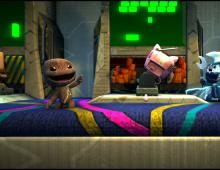Why doesn't it read the flash drive because of the BIOS? Can’t see the flash drive in the BIOS: “computer passions” in simple solutions
Today we will look at:
Today, Windows installation is most often carried out using specially prepared flash drives, which have almost completely replaced optical disks. The process of installing the operating system itself is not difficult, but it often happens that the old one does not see the bootable USB flash drive.
In this topic we will tell you what reasons can lead to this malfunction and what to do if the BIOS does not see the flash drive.
Causes of the problem
One of the most common reasons why the BIOS does not recognize a USB flash drive is that the boot mode is set incorrectly.
Modern laptops and personal computers have two modes: UEFI and Legacy. As a rule, the first mode is activated by default. If the bootable USB flash drive was recorded for another mode, which is currently disabled, then you will see this error.
The second reason why the BIOS does not see the USB is that the installation flash drive was written incorrectly. The fact is that many users, when writing the Windows installer to a flash drive, simply copy the ISO image. You can't do that. This way you won't make the flash drive bootable. Even worse is when files are simply copied onto a flash drive.
Activating the correct boot mode
If everything is clear with the incorrect recording of the bootable flash drive, then setting the boot mode correctly may be an unfamiliar procedure for many. Let's use a specific example to figure out how to change the boot mode.
Today you can find at least three types of BIOS. And regardless of whether you have an old BIOS or a new one, the menu items may differ from those listed below, but they always have approximately similar names and nesting.
If the BIOS does not see the files on the flash drive, then you can change the boot mode as follows:

It may be that the boot drive you are using only supports Legacy mode. In this case, it may be that the BIOS does not see the usb flash drive due to the Secure Boot mode being enabled.
To find out if this mode is enabled, open the search window by pressing Win+R, then enter msinfo32. In the corresponding window you can read whether this function is enabled or disabled.
Disabling Secure Boot mode is very simple. Below is an example for Asus laptops:

If you have an HP laptop, then this mode is deactivated a little differently: in the BIOS you need to go to the “System Conficuration” tab, where you can disable this option.

Bottom line
We hope our material helped you figure out what to do if the BIOS does not see the flash drive and why this can happen. Leave your questions on this topic below and we will help you resolve them quickly.
So, you have decided to install a new system, or use some kind of utility to work with the same system, but it must be written to a flash drive. You insert a flash drive into a USB port, and then a question arises: Why doesn't the BIOS recognize the bootable USB flash drive??
You created a bootable USB flash drive, but the BIOS does not see it. Many factors play a role here, for example, you made the bootable USB flash drive incorrectly, the BIOS needs to be reset or even updated, the program you used to create the bootable USB flash drive turned out to be damaged, and much more. Let's try to solve this problem.
What to do if BIOS does not see the bootable USB flash drive
How to make a bootable USB flash drive and how to do it correctly
First, you should make sure that the flash drive really does not work with your computer. You can check this by using the drive on another PC or laptop; if the same thing happens there, then you probably created the bootable USB flash drive incorrectly.
I would like to note that if you just threw files onto a flash drive and think that it will work, then I hasten to disappoint you. To record a distribution of a system or program, special utilities are required. I will list them now:
- WinSetupFromUSB
- Rufus
- Windows USB/DVD Download Tool
- WinToHDD
- Windows To Go
- Ultra ISO
And this is not all the programs, but I have listed the most basic tools. I have a review for each. For example, if you want to make a bootable USB flash drive with Windows, then use Rufus or WinSetupFromUSB. If the first one does not work and the flash drive is not visible in the BIOS, then use another one.
I will list the articles that I talk about creating a bootable USB flash drive. You probably know many of the methods.
If you have used all the specified utilities and the flash drive still does not work, make sure it is working properly, try formatting it to NTFS or FAT32, and try booting from another computer. And if this does not help, then use another flash drive.
How to set up BIOS for a bootable USB flash drive
First you need to understand whether the flash drive is not visible at all in the BIOS, that is, there is no line “USB flash drive name”, or there is a line, but when you click on this item you see nothing but a black screen.
There are two options why this happens - your flash drive is faulty or you recorded the image incorrectly, or there are problems with your BIOS, so the BIOS does not see the bootable flash drive.
The best option is to boot from a flash drive - . You can enter it using the ESC key or F8. It's different on different devices, that's why . Having opened the Boot Menu, you will see a list of devices from which you can boot - flash drives, hard drives, CD-DVDs. You'll need to find something like a Kingston 8 GB USB or similar, depending on the brand of your flash drive.
If you do not have the Boot Menu, or it is disabled, then in the BIOS on the tab Boot or Advanced you need to move your flash drive to first place. This is done using the F5 and F6 keys, but I repeat, the parameters may differ for each BIOS model, you will have to figure it out yourself, or write in the comments so that I can help you.


After you have placed the bootable USB flash drive in the first place in the BIOS, press the key F10 to save the current BIOS settings. Or on the tab Exit select the option Save Changes and Exit.

Finally, you can if none of the above helps. Follow the link and read about it. Typically the reset option is located on the Exit tab and is called Load Optimal Defaults or a little differently.
Let's summarize all of the above and say why the BIOS does not see the bootable USB flash drive:
- The flash drive is faulty. Use another flash drive, or try using it on another PC.
- The wrong program was selected to create a bootable USB flash drive.
- The image recorded on the flash drive is damaged and needs to be replaced.
- The BIOS settings are incorrect, you need to reset it.
- The BIOS does not support booting from flash drives (this also happens), then the BIOS needs to be updated.
If you have such “misunderstandings” with a flash drive, then try creating a disk with Windows or the desired program. Regarding this, I would like to note that you need to be extremely careful. First, you need to find the correct firmware that fits your motherboard, if the wrong version is selected, or from a different board, then there is a high probability of failure of the entire motherboard, and you certainly don’t want that.
Hello dear readers and colleagues in computer science!
Why might this happen?
Let's look at the reasons. Imagine that you decided to install an operating system and found an old flash drive. It was detected on the laptop, you formatted it and rolled up the system for installation on it. And so you rebooted, but the PC simply did not see the flash drive. The most common case is that you simply did not change the BIOS to the boot from mobile hard drive setting.
It's done like this. To change these same settings, you need to restart the laptop and when you see a screen like this -


Then pay attention to which button is written in the line that I underlined. In the figure I also indicated which keys can also be used to call up the BIOS (it all depends on the model of the program itself). If you did everything correctly, you will see a screen like this.


Here you need to configure the boot parameters . Go to the section First Boot Device and in this line you select USB-HDD.




Now the computer should see the flash drive.
The second reason is a problem with the drivers. They either got lost and produce bugs, or were not installed initially. USB ports are on the motherboard. If they do not work, then the media will not be visible, or will be detected only once.
You need to download the software from the manufacturer's website and install it. It is also advisable to scan the laptop for the presence of firewood in other devices. This can be done with this software.
Install, scan and reboot. In general, this procedure needs to be done after each demolition of the operating system and also after restoring it. The program is free, works quickly, and is entirely in Russian.
How to identify the problem?


If you insert a flash drive and the computer freezes, then the problem lies in the media itself. You need to do some low level formatting. This is a complete reassembly of sectors with their cleaning.


Also, system brakes can be caused by a conflict with the hard drive. In this case, you need to check the hard drive itself with a standard program built into the OS. Due to untimely defragmentation of the media, such problems appear.
If you have Windows 7 Ultimate, then it is quite possible that you downloaded a homemade assembly. In such cases, only reinstalling the licensed software from an image can help. Of course, there won’t be any additional features, but stability of operation in this case is guaranteed. You will have to format the disk, so be prepared to transfer the data to an external hard drive or online storage.


If you get an error that says that there is no connection to the portable device, this means that the device itself is faulty. Again, it is unlikely that you will be able to save the data, so just format it. Also check your entire computer for viruses; it is quite possible that malicious scripts will block OS operations responsible for connecting via USB ports. It is advisable to do this with a powerful antivirus with updated databases, and not with free analogues that rarely find anything at all.
Universal solution


If you don’t know what to do and how to fix the problem, then simply remove Windows, format the hard drive and the flash drive itself. It is better to do a major reinstallation of the OS rather than do it with half measures. In my case this was the only thing that helped. In addition, buy new media, most likely this is the problem. The impact could damage it, or short out the circuit board inside the case.
Conclusion
This is where I will end the article. I hope you don't encounter any bugs when working on your laptops. Share the article on social networks and subscribe to the blog to stay updated on new materials! All the best to you and see you, my dear readers!
As a rule, problems of this kind are detected when trying to boot from a specific Flash drive. If your computing device does not see the flash drive in the BIOS, then most likely you have not made the necessary changes to the basic system of the computer, or your removable storage device is simply not bootable. However, let's take a closer look at this confusing situation: “the flash drive is inserted into the PC, but does not work properly.”
Is your USB Flash drive working?
Of course, you can suffer for a long time and conduct unsuccessful experiments in the BIOS system itself, which will ultimately turn out to be a waste of your valuable time. Because the flash drive may simply be inoperable. To verify the opposite, try enlisting the help of a testing device - insert the “capricious” flash drive into another PC.

And in general, check whether the (seemingly faulty when you boot the PC) storage device is visible in the Windows environment. That is, is USB memory detected in the operating system itself? If not, then the Flash Drive needs to be repaired. Perhaps everything will be resolved after using a special software tool, for example, a proprietary flash drive recovery utility from its manufacturer.
Priority BIOS settings or what, where and how...
- Insert the flash drive into the USB connector of your PC.
- Restart your computer.
- Enter the BIOS using the corresponding button on the keyboard (for those who don’t know how to do this -).
- Depending on the version of the basic microsystem, the name of the section in which the connected flash drive is displayed may be different from the “BOOT” tab discussed below. And yet, be guided by the abbreviation “USB” when searching for the required partition in the BIOS.

- Set to boot from a flash drive.
- Also check if the USB hardware controller is disabled.

- Save and reboot the computer.

It’s great if the USB Flash Drive is detected and the PC switches to boot mode from the flash drive. Otherwise, move on to the next section of this article.
Boot properties of USB flash drive
Let's say you want to install an operating system whose distribution is stored on a removable storage device. However, in order for a flash drive to be defined as a bootable drive, it must be configured as such. In other words, in the process of recording Windows installation files, you must use a special utility, for example, “Rufus” (to download, click here ). Only in this case the flash drive will truly become bootable.
Storage device hardware incompatibility
In some situations, the system BIOS does not see the flash drive due to the outdated interface of the memory device itself. Make sure your USB drive is not an "ancient" 1.1 drive. However, new flash drives with 3.0 technological characteristics may also not be perceived by outdated computer systems.

So, the detailed characteristics of your storage device can be found on the official technical support website - enter the model of the flash drive and read the information you are interested in. By the way, this action can help in solving problematic situations related to any malfunction of your USB device (meaning the presence of a specific recovery utility on the website).
Updating the system BIOS - as a solution to the “invisible” USB problem
Sometimes it is advisable to carry out the process of software upgrading the BIOS of a microsystem. How to do this is described in detail here. However, in modern computers this operation is performed using a fairly simple method.
- Visit your motherboard's technical support site.
- Download the new BIOS version(s).

- Using a special flasher, flash the BIOS of your computer.
However, before you begin the albeit not difficult, but still very responsible operation of “upgrading the version of the basic PC microsystem”, carefully and in detail study the background information on the correctly implemented update process (this may be of invaluable help to you - go to ).
Bootable USB incompatibility of outdated computer systems - there is a solution!
Let's call such computers “exotic”. However, if you need to give your old computer the “boot from USB drive” properties, then follow the instructions below.
- Use this link - https://www.plop.at/en/bootmanager/download.html.
- After you have downloaded “Plop Boot Manager”, burn it to a CD.
- Set the BIOS to prioritize booting from the optical drive.

- Next, after the “Plop” work area of the utility is displayed on the screen, insert the USB drive into the appropriate connector (preferably the main one, which is located behind the PC system unit).

- Select USB in the bootloader window.
Now your “old man” can use a flash drive as a boot drive.
Summing up
So, the author of this article is confident that after you have read the material in the presented article, you will certainly succeed. And yet, I would like to note one important fact: most users make mistakes only because they misunderstand the problem and resort to sometimes meaningless advice from “kind Internet GURU”. At the same time, exposing your car to the critical danger of “complete failure.” Be wise when choosing one or another solution to your computer problems and your experience will always be productive!


